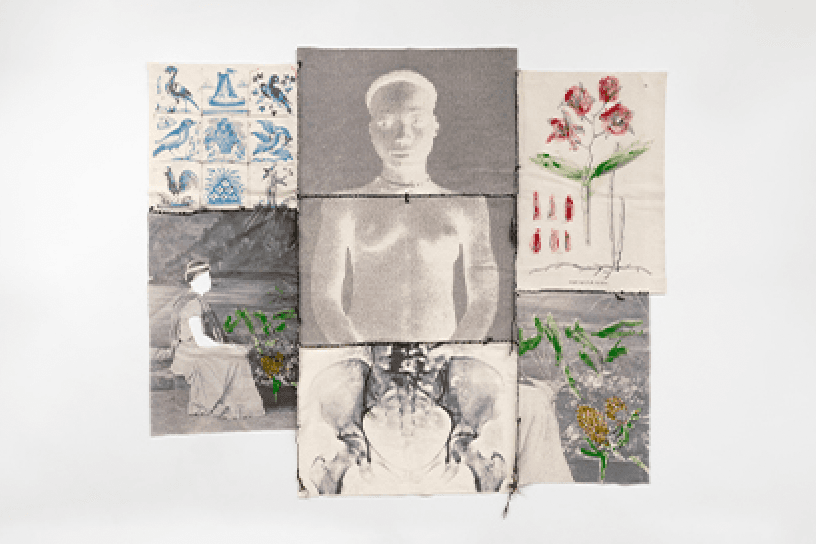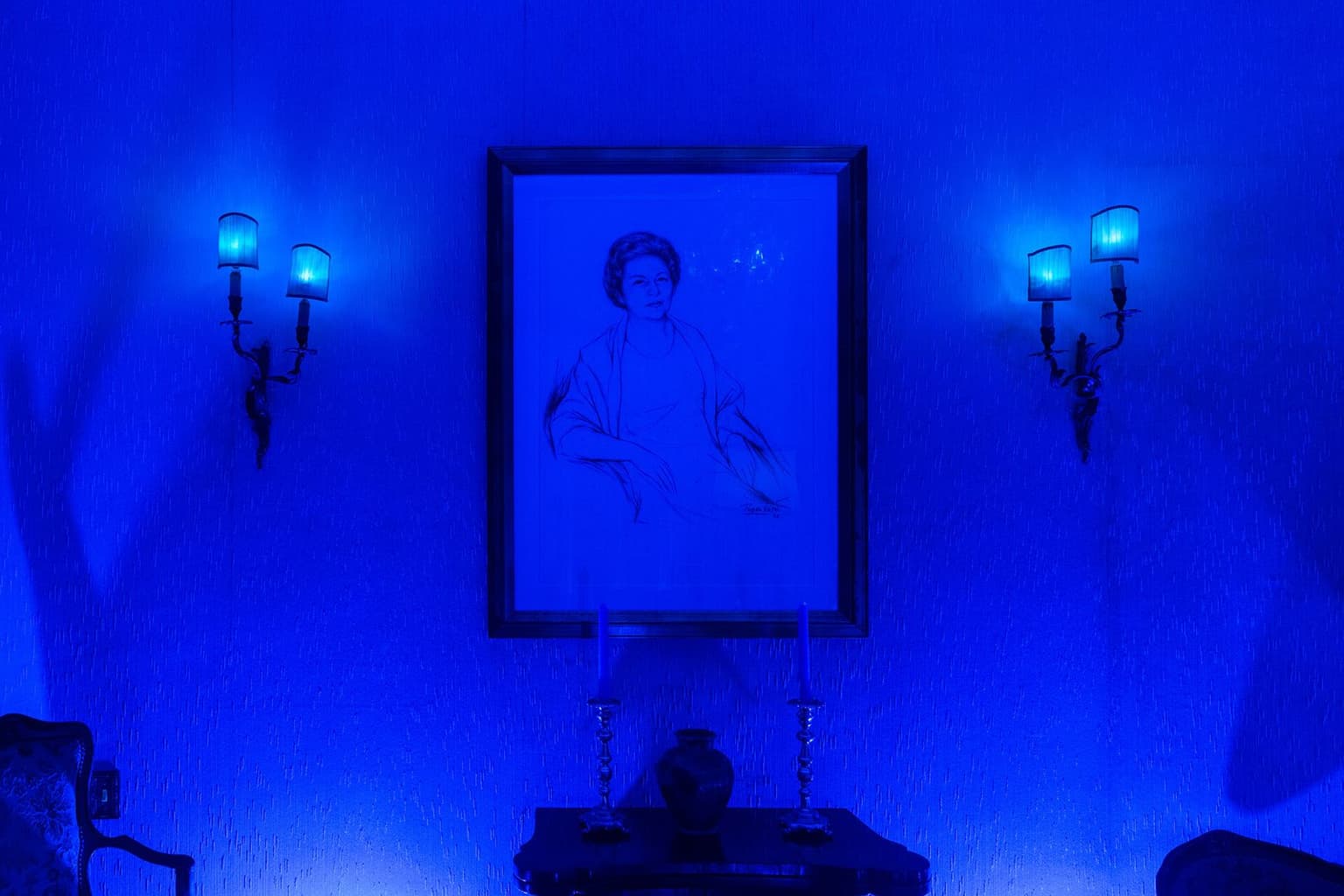













On one side, the garden: a place of rest and meditation under the aegis of botany, with its regenerative power that distances us from the harshness of the city. Situated outside the home of collector Eva Klabin (1903–1991), it includes plants such as guaimbé, swamp yellow lily, dieffenbachia (commonly known as “dumb cane”), coral plant, and other tropical species. The execution and maintenance project, dated July 1975 and signed by the office of landscape architect Roberto Burle Marx, does not conceal that the space was crafted in the image and likeness of humankind, following the style of its era. The garden is not, therefore, nature in miniature but carries its own symbolic scheme. Here, it becomes the element upon which a domesticated, orderly landscape rests, framed by the glass walls of the house that open onto it. It reflects the pursuit of joy and serenity sought by its former owner. It never, however, ventures into the realm of knowledge and rationality—that is, the interior.
On the other side, the forest: At the back of the property, a staircase leads to the intoxicating remnant of a surviving Atlantic Forest, minimally altered by human action, where giant philodendrons, peace lilies, Alpinia purpurata, and other species grow chaotically and spontaneously. Without the limits of a frame or the hand that prunes, nature is perceived as wild, evoking horror through the excess of what escapes human control. This is the effort of the landscape—and of gardens in general: to replace its untamed counterpart with a civilized analogue, conscious of its place in a hierarchy where humanity converges at the center of the composition. This unfolds an entire history of art (with its picturesque nature, catering to the sensibility of a European aristocracy), of science (which insists on the supremacy of the intelligence of 0.4% of animal life over 83% of botanical matter), and of raciality (which subjects non-white forms of life to analogous systems of domination and eradication as seen in the biosystem).
It is within this tripartite alliance that Rosana Paulino investigates the forces of symbiosis between the Black body and plants. Through extensive and meticulous research conducted throughout the year in Eva’s garden and collection, the artist invokes the memory of mutualism—a relationship between distinct species—into this private space. Plant-women, born of the encounter between Afro-diasporic womanhood and sacred leaves, guard the passageways of the house, while cutouts and photographic representations of enslaved people in Brazil coexist with images of botanical life. These are beings who not only witnessed the violent colonization but also act today as healers of Brazil’s trauma. Through the celebration of ancestry and faith in axé, discussions on coloniality, and a call to heed the teachings of nature, Paulino proposes a glimpse of a possible future.
***
If, on the first floor, botany leads us pulsing with strength and vitality, upstairs it awaits us in a tone of questioning. Greeting visitors ascending the stairs, Tropical Paradise (2017) stitches together a social body composed of illustrations of Brazilian fauna and flora, eugenic anthropometric studies, and photographs of Black women. To 19th-century European eyes, the composition resonates with the study of living beings that presented obstacles to civility—in this case, the distinction between the human and the non-human, severely violated by the experience of slavery—while critiquing the parameters shaping our social, scientific, and artistic fields. This work joins others on the second floor that engage in a debate about the place of Black women in the private sphere.
At the end of the journey, in the bedroom, two installations pay homage to wet nurses: Black women forced to give their maternal milk to white babies instead of nursing their own children. This practice, normalized until the abolition of slavery in Brazil, was immortalized in photographic records produced by the elite. In these images, the wet nurses posed alongside their “little masters” for minutes on end, motionless. The case of Mônica is exceptional due to the preservation of her proper name, which accompanied her photographs not once, but twice during her life: the first in 1860 by João Ferreira Vilela, and the second between 1877 and 1882 by Alberto Henschel. Dressed in luxurious attire, Mônica is depicted young, beside a boy, and years later, older, with white hair and facial lines bearing the marks of her harsh condition. Retained by the family as a dry nurse after feeding her oppressors’ descendants, it is inferred that she gained the right to remain in her quarters after decades of service. In the heart of a family photograph, where the tension of such colonial violence resides, Mônica’s penetrating gaze and proud posture emerge as an act of resistance and, in their way, a true act of resilience.
Today, Rosana reserves for her—and for so many women, her ancestors in memory and life—a space for rest. In the forced movement that brought them to these lands, there is, finally, the possibility of settling and forming the roots of a new tomorrow. Here, again, we have much to learn from plants: In Nevada, United States, the species Pinus longaeva represents the oldest tree on record in the world, surpassing 4,600 years. Growing up to 2,500 meters above sea level, these pines develop at the limit of possibility: the dolomite-origin soil is so poor in water and nutrients that the trees grow stunted and twisted. These beings have developed survival and longevity technologies amid adversity. Their sisters, found in California, do not come close to the records set in the White Mountains.
Between the scars and sutures of historical trauma and the information carried in the roots of trees, paths of survival and strategies for healing are shared. Let us learn to listen to the plant-women.
Lucas Albuquerque








